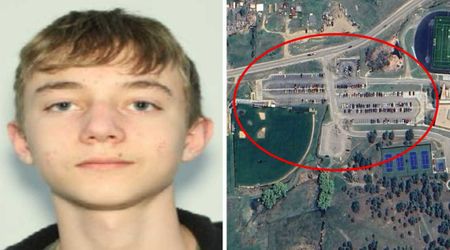Expert outlines mistake he thinks Air India co-pilot may have made leading to crash that left 265 dead

AHMEDABAD, INDIA: As speculation swirls online over the cause of an Air India flight’s catastrophic crash, one aviation expert believes a tragically simple mistake may be to blame.
Captain Steve, a commercial pilot and crash analyst, suggests that the co-pilot of Flight AI171 may have accidentally raised the wing flaps instead of retracting the landing gear, an error that could have critically reduced lift and led to the deadly descent.
The London-bound Boeing 787 Dreamliner crashed moments after takeoff from Ahmedabad, Gujarat, erupting into flames over a residential neighborhood.
The disaster claimed the lives of 241 people on board and at least 24 more on the ground.
What is Captain Steve’s theory about the Air India flight tragedy?
According to the Daily Mail, Captain Steve, a commercial pilot and aviation expert, believes a shockingly simple cockpit error may have triggered the Air India crash.
He suspects the co-pilot mistakenly pulled the flap lever instead of retracting the landing gear, an error that could have led to catastrophic consequences just moments after takeoff.
“Here's what I think happened, again folks, this is just my opinion,” Steve said. "I think the pilot flying said to the co-pilot said 'gear up' at the appropriate time. I think the co-pilot grabbed the flap handle and raised the flaps, instead of the gear. If that happened, this explains a lot of why this airplane stopped flying.”
The entire sequence of Air India Flight 171from takeoff to the crash was captured on CCTV.
— Zero Fox Given (@zerofoxgiven21) June 13, 2025
For my pilot frens, if it was a flaps issue, how can it get off the ground if they weren't deployed? pic.twitter.com/i5Zz5VNhOz
He further explained that raising the flaps too early would drastically reduce airspeed and altitude, making the aircraft difficult, if not impossible, to control. To support his theory, he pointed to the behavior of the Boeing 787’s composite wings, which typically bend upward during takeoff due to lift forces.

However, footage and images from the crash suggest the wings showed no such flexing, fueling speculation that the flaps, essential for lift, had been mistakenly retracted.
While this theory has gained attention, the exact cause of the June 12 tragedy remains unknown. Investigators are now examining all possibilities, including mechanical failure and human error, as they work to determine what led to one of the deadliest aviation disasters in recent years
Who was operating the Air India flight that crashed?
Among those who lost their lives in the Air India flight tragedy was Captain Sumeet Sabharwal, the experienced pilot at the controls of the ill-fated Boeing 787 Dreamliner.
These are the two pilots who were in the cockpit of the Air India Boeing 787 Dreamliner.
— mikkimouse (@mikkimouse00) June 13, 2025
Captain Sumeet Sabharwal
First Officer Clive Kunder
Our hearts go out to their families and loved ones during this unimaginable time. 🙏❤️ pic.twitter.com/qfTfgu28OJ
Captain Sabharwal had amassed over 8,200 flying hours during his career. First Officer Clive Kunder, who was co-piloting the flight, had logged 1,100 hours and completed his aviation training at the Paris Air Flight School in Florida. He was a native of Mumbai.
The only survivor of the crash, 40-year-old Vishwash Kumar Ramesh, is currently recovering in the hospital and was recently visited by Indian Prime Minister Narendra Modi. Ramesh has shared chilling details of the moments leading up to the crash.
A miracle in the midst of devastation.
— CNBC-TV18 (@CNBCTV18News) June 13, 2025
Vishwash Kumar Ramesh, a 40-year-old British-Indian businessman, is the sole survivor of the tragic Air India Boeing 787-8 crash — India’s deadliest single-aircraft disaster in decades.
His chilling account of survival — escaping through a… pic.twitter.com/2n3lt9tB6E
In a significant development, investigators recovered the aircraft's digital flight data recorder, commonly known as the black box, on Friday. It was found on a rooftop near the crash site. The Aircraft Accident Investigation Bureau of India confirmed that a full-scale investigation is now underway.
India's Civil Aviation Minister Ram Mohan Naidu called the black box recovery a critical breakthrough in uncovering the cause of the disaster. US agencies, including the NTSB, FAA, Boeing, and General Electric, are also participating in the probe.










